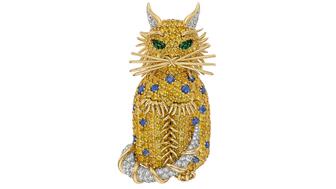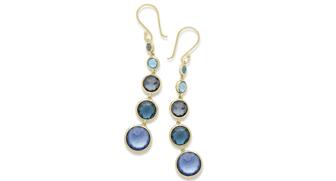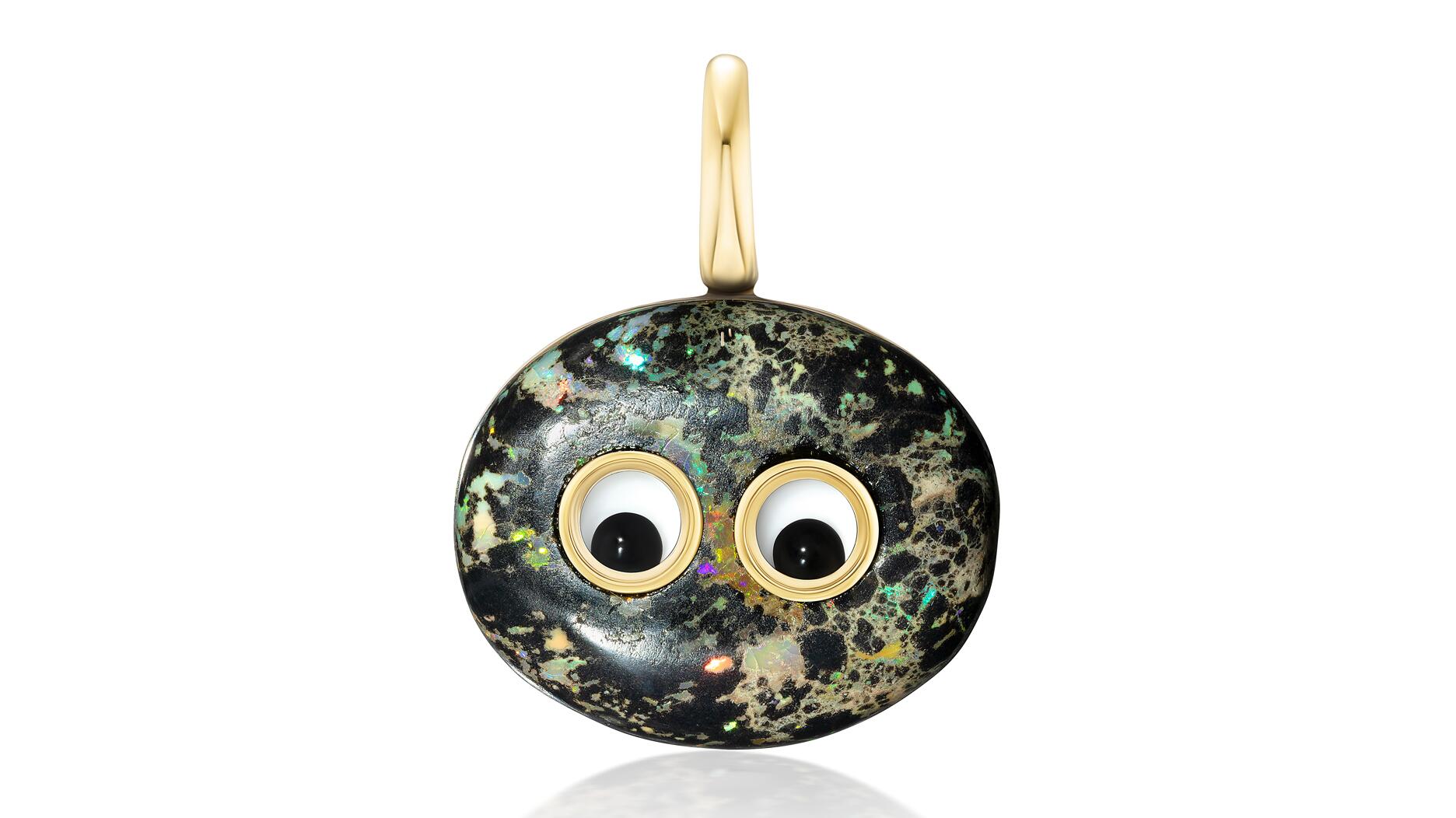The luxury goods company said founder Ippolita Rostagno will remain at the brand’s helm.

I have a confession to make: I shop at your store a lot.
I’m that maddening sale you think is going to happen but, 99 percent of the time, doesn’t progress any further than filling up that online shopping cart.
Like most consumers today, particularly my millennial cohort, I shop online a lot but it’s mostly just for research.
With information so easily available online, I can browse your inventory in a few minutes, pick out things I like and check to see if they’re available online anywhere else for less. Then I can fill up a cart with all of the things I’d like to buy and … think about it.
Buying online is second nature to my digital-native generation. It’s become my preferred mode of shopping because it helps me avoid hassles—the time spent getting to a store, dealing with crowds or encountering an in-store selection that is more limited than its online counterpart (the new retail refrain always seems to be, “You can probably find it if you look on our website!”).
And though browsing jewelry online is part of my job, because it helps me see what retailers are selling, I also find online shopping to be a stress reliever. It is a belief I think many other millennials share, though research about the psychology of “retail therapy” has pretty much only focused on the brick-and-mortar experience thus far.
Make no mistake, though I love filling up online shopping carts with things I’d potentially like to buy and I take great, anxiety-reducing satisfaction in a well-curated cart, I make the vast majority of my purchases online too.
But there are a few things that stop me.
As your resident secret online shopper (whom you never hired), I’m going to fill you in on what keeps me from clicking the “Purchase” button at your store to better inform your e-commerce best practices.
1. You’re Not Showing Scale
At a panel at the Vicenzaoro jewelry trade show this year, Farfetch’s global vice president Jamie Freed noted how, over time, consumers have demonstrated their growing confidence in buying fine jewelry online by engaging in increasingly larger transactions, with purchases of pieces over $20,000 on the rise.
But there are special considerations to buying fine jewelry over the internet and a major one is scale.
An image of a piece of jewelry being
It’s not easy to visualize the scale of an item by its listed measurements and specifications alone.
Much like a handbag, if I can’t see how large a piece is in relation to the human body I simply can’t picture it, so I can’t buy it. I need to see a ring on the finger, a pendant around someone’s neck, etc.
In my opinion, if you’re not going to show a piece of jewelry being worn, you might as well not show it at all.
The image I need to feel confident in the size and shape of said jewel doesn’t require an expensive professional photo shoot; a clear iPhone snap of the item on a sales associate is all you need.
2. Your Return Policy Is Not Clearly Stated
Call me spoiled, but successful online sellers have set the bar high for the experience I’m expecting to have online and today, that means free shipping and returns.
As shoppers, we’ve become so used to cost-free deliveries that it’s surprising when we do end up with a shipping or return fee and, for me, it’s a purchase deterrent.
Likewise, if a return period is less than the retail standard – 30 days – I feel duped, almost as if a company is hoping I wouldn’t notice and therefore miss the opportunity to send something back if I’m unhappy with it.
Fine jewelry has its nuances compared to other categories and there might be instances where an item is ineligible for return—say, when a piece of jewelry has been made to order.
It’s imperative that that type of information is clearly communicated to shoppers, not in fine print but directly and totally up front to build consumer trust, with potential buyers knowing exactly what kind of commitment they’re making.
3. Your Website is Your Pet Project
My final critique is an issue I tend to encounter more with jewelry designers’ individual e-commerce sites than with the websites of retail stores, independently owned or otherwise.
Again and again, I visit websites with more information than I need, leaving me to sift through content when trying to find simple product information.
I understand why designers do this—they know that it’s not enough to make and sell their jewelry today; they must create stories around it, send out newsletters and e-mails and make note of illustrious press features—but many take it too far.
The most important feature I need to see on a jewelry-selling website is a highly visible menu giving me access to the pieces they’re selling, letting me scroll through all the inventory and items by category (rings, earrings, bridal, etc.).
When I go to a website and get stuck on a fancy, carefully designed landing page that makes me click to “enter” said domain or makes me scroll through beautifully crafted content to eventually select a “Shop Now” button, I’ve already lost some interest.
The underlying issue is the same for the previous tips I’ve shared—a lack of efficiency and ease. Rather than hold online shoppers hostage with content, take them to one homepage that lets them get straight to their shopping via a clear navigation menu and presents some teasers to content, giving them the choice to click on what they’d like.
And when it comes to navigation, please, forego the collection names.
Collections are important to you; they are not important to your audience. We’re shopping with you because we love your jewelry, but we rarely remember which pieces came out when and why.
If you must include, leave an option for browsing by collection and for browsing by category.
Your online shopper is moving faster than you realize—it’s your job to keep up with her.
The Latest

Laura Burdese, who joined the Italian luxury brand in 2022, will take on the role in July.

Need a gift for the cat lover who has everything? Look no further than our latest Piece of the Week.

How Jewelers of America’s 20 Under 40 are leading to ensure a brighter future for the jewelry industry.

It purchased the “Grosse Pièce,” an ultra-complicated Audemars Piguet pocket watch from the ‘20s, for a record-breaking price at Sotheby’s.


The lab-grown diamond grower now offers custom engagement and fashion jewelry through its Kira Custom Lab Jewelry service.

The boutique is slated to open this week inside Terminal 8, offering pre-owned Rolex watches and more to international travelers.

Roseco’s 704-page catalog showcases new lab-grown diamonds, findings, tools & more—available in print or interactive digital editions.

Sponsored by Digital Monitoring Products

The special-edition egg pendant ingested in a New Zealand jewelry store was recovered after a six-day wait.

Associate Editor Natalie Francisco plays favorites with Piece of the Week, selecting a standout piece of jewelry from each month of 2025.

The “Love and Desire” campaign is inspired by the magic that follows when one’s heart leads the way, said the brand.

Two awardees will receive free tuition for an educational course at the Swiss lab, with flights and lodging included.

Berta de Pablos-Barbier will replace Alexander Lacik at the start of January, two months earlier than expected.

Sotheby’s held its first two jewelry sales at the Breuer building last week, and they totaled nearly $44 million.

Winners will receive free registration and lodging for its fourth annual event in Detroit.

Here are six ideas for making more engaging content for Instagram Reels and TikTok, courtesy of Duvall O’Steen and Jen Cullen Williams.

The honorees include a notable jewelry brand, an industry veteran, and an independent retailer.

Carlos Jose Hernandez and Joshua Zuazo were sentenced to life without the possibility of parole in the 2024 murder of Hussein “Sam” Murray.

Yood will serve alongside Eduard Stefanescu, the sustainability manager for C.Hafner, a precious metals refiner in Germany.

The New Orleans jeweler is also hosting pop-up jewelry boutiques in New York City and Dallas.

Set in a Tiffany & Co. necklace, it sold for $4.2 million, the highest price and price per carat paid for a Paraíba tourmaline at auction.

The jeweler’s “Deep Freeze” display showcases its iconic jewelry designs frozen in a vintage icebox.

Take luxury gifting to new heights this holiday season with the jeweler’s showstopping 12-carat sphene ring.

This year's theme is “Unveiling the Depths of the Ocean.”

In its annual report, Pinterest noted an increase in searches for brooches, heirloom jewelry, and ‘80s luxury.

Starting Jan. 1, customers can request the service for opal, peridot, and demantoid garnet.


























